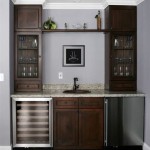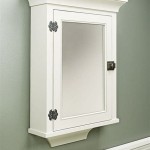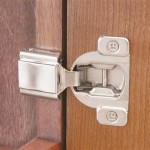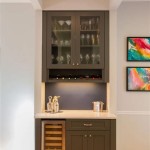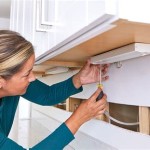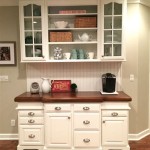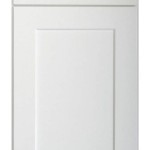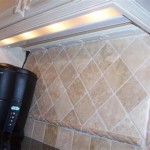Knob Placement on Shaker Cabinet Doors: Achieving Visual Harmony and Functionality
The selection and placement of knobs on Shaker cabinet doors are crucial elements in achieving a cohesive and functional kitchen or bathroom design. Shaker cabinets, characterized by their minimalist, framed panel design, rely on clean lines and simplicity. Therefore, hardware choices, including knob placement, must complement this aesthetic. Inappropriate placement can disrupt the visual balance and compromise the overall design integrity. This article details the fundamental principles guiding knob placement on Shaker cabinet doors, focusing on achieving both visual appeal and practical functionality.
Understanding the Shaker Aesthetic and Its Impact on Hardware Choices
The Shaker design philosophy emphasizes simplicity, utility, and craftsmanship. This philosophy extends to every aspect of a Shaker cabinet, including the hardware. Ornamentation is typically minimal, and the goal is to achieve a timeless and functional design. Therefore, the knobs selected for Shaker cabinets should be understated and complementary to the clean lines of the doors. The material, finish, and size of the knob all contribute to the overall aesthetic. Common materials include brushed nickel, matte black, and oil-rubbed bronze, which offer a subtle contrast to the cabinet door while maintaining a sense of understated elegance. The size should be proportionate to the door size, avoiding overly large or small knobs that could appear disproportionate.
Consider the overall color palette of the room. If the cabinets are painted in a neutral color, such as white or gray, the hardware can provide a subtle accent. Conversely, if the cabinets are stained to showcase the natural wood grain, the hardware should blend seamlessly to avoid overwhelming the wood's natural beauty. The key is to maintain a balance between functionality and visual harmony, ensuring that the hardware enhances rather than detracts from the Shaker design.
Furthermore, the choice of knob style should align with the overall design intent. Simple, round knobs or slightly more detailed, but still understated, options are generally preferred. Avoid overly ornate or decorative knobs that clash with the minimalist aesthetic. The goal is to create a cohesive and timeless design that reflects the Shaker principles of simplicity and functionality.
Standard Knob Placement Guidelines for Shaker Cabinet Doors
While personal preference plays a role in knob placement, certain guidelines provide a solid starting point for achieving a visually balanced and functional layout. These guidelines address both upper and lower cabinets, taking into account the different ergonomic considerations for each.
For upper cabinets, a common recommendation is to position the knob 2 to 3 inches from the bottom corner of the door on the side opposite the hinges. This placement allows for a comfortable grip and easy access to the cabinet's contents. Consistency is crucial; maintaining a uniform distance across all upper cabinets creates a clean and organized look. Before drilling any holes, it's advisable to use painter's tape to mark the proposed knob positions and visually assess the layout. This step allows for adjustments and ensures that the knobs are positioned in a visually pleasing manner.
For lower cabinets, the knob placement is typically similar, but with the knob positioned 2 to 3 inches from the top corner of the door on the side opposite the hinges. This placement mirrors the upper cabinet layout and contributes to a cohesive design. However, ergonomic considerations may warrant slight adjustments. For example, if the lower cabinets are frequently used, positioning the knobs slightly higher may improve accessibility. Again, consistency is key; maintaining a uniform distance across all lower cabinets creates a sense of visual order.
In cases where cabinets have a significant height difference, adjusting the knob placement proportionally can help to maintain visual balance. For taller cabinets, increasing the distance slightly can prevent the knob from appearing too close to the corner. Conversely, for shorter cabinets, decreasing the distance slightly can prevent the knob from appearing too far away. The goal is to achieve a visually harmonious layout that takes into account the unique dimensions of each cabinet.
Adjusting Knob Placement Based on Door Style and Size
The standard knob placement guidelines serve as a foundation, but adjustments may be necessary based on the specific door style and size. Different door configurations, such as those with thicker frames or narrower panels, may require modifications to ensure optimal placement and visual appeal.
For Shaker cabinet doors with wider frames, positioning the knob closer to the inner panel may be preferred. This placement helps to maintain a balanced look and prevents the knob from appearing too close to the edge of the door. Conversely, for doors with narrower frames, positioning the knob slightly further from the inner panel may be necessary to ensure a comfortable grip and easy access. The key is to visually assess the door and adjust the placement accordingly.
The size of the door also influences knob placement. Larger doors may benefit from slightly larger knobs, which can improve accessibility and visual balance. Conversely, smaller doors may require smaller knobs to avoid overwhelming the design. When using larger knobs, positioning them slightly further from the corner may be necessary to prevent them from appearing too crowded. The goal is to achieve a proportionate and visually harmonious layout that complements the door's dimensions.
Consider the presence of other design elements, such as decorative moldings or applied panels. If the door features intricate details, positioning the knob in a way that avoids obstructing these elements is crucial. This may involve slightly adjusting the placement or selecting a smaller knob that blends seamlessly with the overall design. The key is to create a cohesive and visually appealing look that showcases the door's unique features.
For drawers, the knob is typically centered on the drawer panel. If the drawer is particularly wide, using two knobs can provide a more balanced look and improved functionality. In this case, the knobs should be evenly spaced on either side of the drawer's center. The distance between the knobs should be proportional to the drawer's width, ensuring a visually harmonious layout.
In situations where a combination of knobs and pulls is used, maintaining consistency in height placement is crucial. This creates a cohesive and organized look, even when different types of hardware are used. Aligning the knobs and pulls at the same height across all cabinets and drawers is essential for achieving a visually balanced layout.
Ultimately, the optimal knob placement depends on a combination of factors, including the door style, size, personal preference, and the overall design intent. Experimentation and visual assessment are key to achieving a visually harmonious and functional result. Prior to drilling any holes, it is always recommended to use painter's tape to mark the proposed knob positions and visually assess the layout from different angles. This allows for adjustments and ensures that the knobs are positioned in a way that complements the Shaker aesthetic and meets the user's needs.

4s And Skinny Narrow Shaker Hardware Placement Taylorcraft Cabinet Door Company

Cabinet Hardware Placement Guide

Easy Cabinet Hardware Placement Guide Bloom And Babe

Where To Place Cabinet Hardware Emtek Living Blog

The Ultimate Guide For Cabinet Hardware Placement And Sizing

A Simple Guide For Ideal Cabinet Knob Placement

Cabinet Hardware Placement Guide For Shaker Cabinets

How To Place Cabinet Knobs Pulls
Cabinet Hardware Placement Where To Put Knobs And Handles Vevano

A Designer S Guide To Hardware Placement
Related Posts

